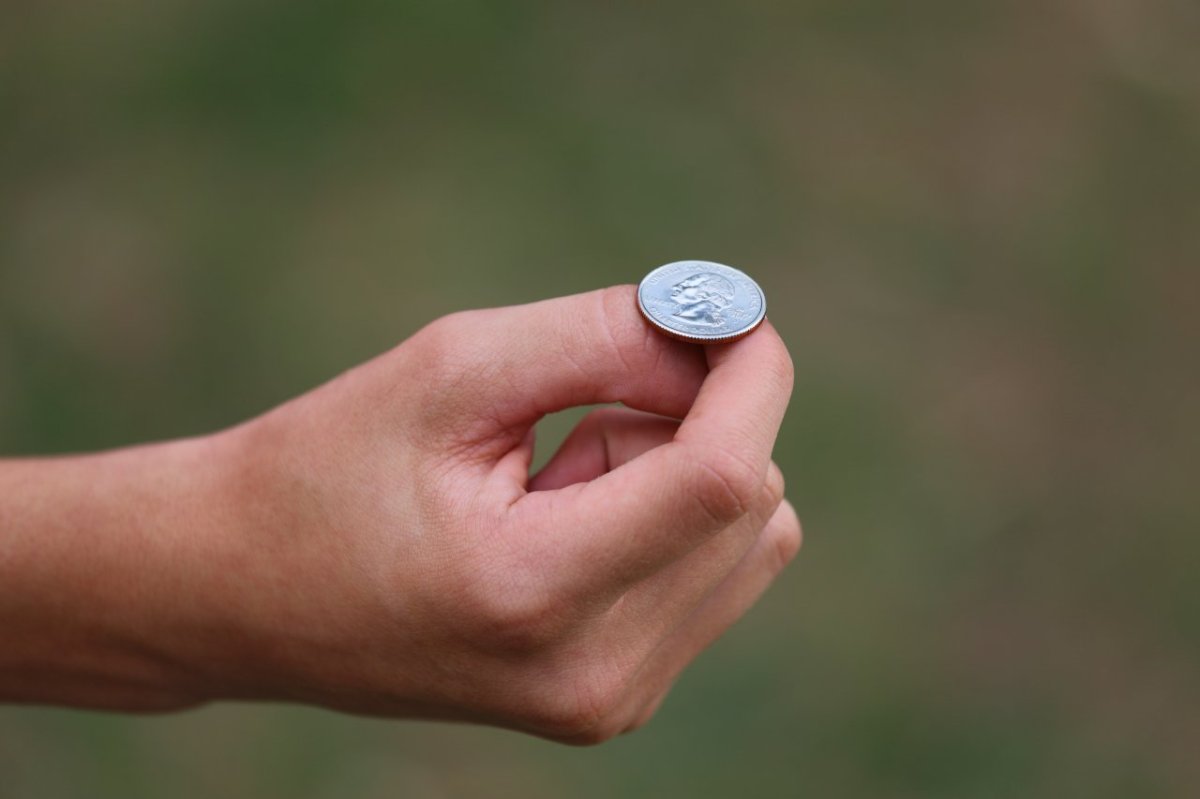Coin Toss Game: More than just a simple flip, the coin toss holds a fascinating place in history, mathematics, and everyday life. From settling disputes on the playground to deciding the fate of sporting events, the seemingly random outcome of a coin toss has captivated minds for centuries. This exploration delves into the mechanics, variations, and surprising depth of this ubiquitous game of chance, revealing its unexpected complexities and cultural significance.
We’ll examine the physics behind a fair toss, explore different scoring systems and game variations, and even delve into the mathematical probabilities that govern the outcomes. We’ll also look at how bias can affect results and how to ensure a fair game. Get ready to flip your perspective on this classic!
Coin Toss: A Deep Dive

The humble coin toss, a seemingly simple act, holds a surprising depth of complexity when examined closely. From its mechanics and variations to its broader cultural significance and mathematical underpinnings, the coin toss offers a fascinating lens through which to explore probability, chance, and decision-making.
The Mechanics of a Coin Toss, Coin toss game
A coin toss involves flipping a coin into the air, allowing it to rotate multiple times before landing on a flat surface. The outcome, heads or tails, is determined by the coin’s final orientation. Several factors influence the result, including the initial spin imparted to the coin, the height of the toss, and the nature of the landing surface. Theoretically, in a fair toss with an unbiased coin, the probability of heads is equal to the probability of tails – both are 50% or 0.5.
To conduct a fair coin toss, follow these steps:
- Ensure the coin is unbiased (not weighted).
- Hold the coin between your thumb and forefinger.
- Flip the coin with a reasonably consistent motion, aiming for a height that allows for several rotations.
- Allow the coin to land on a flat, level surface without interference.
- Observe the outcome without attempting to influence it.
The table below illustrates the possible outcomes for multiple tosses:
| Number of Tosses | Possible Outcomes |
|---|---|
| 2 Tosses | HH, HT, TH, TT |
| 3 Tosses | HHH, HHT, HTH, HTT, THH, THT, TTH, TTT |
Variations of the Coin Toss Game

The basic coin toss can be adapted into various games with different structures and scoring systems. These variations introduce varying levels of complexity and impact the probability of winning.
For example, a “best of three” format requires winning two out of three tosses, while a points system might award one point for heads and two points for tails, changing the strategic approach.
One unique scoring system could be: Heads = 1 point, Tails = 2 points. The first player to reach 5 points wins. This system favors tails, increasing the strategic element.
Coin toss games are simple, yet surprisingly strategic. The randomness can be a bit frustrating, but think of it like the unpredictable nature of enemy AI in a game – like, for instance, the challenging opponents you might face in dress coat video game. Just as a lucky coin flip can change the tide of a simple game, a well-timed action in a video game can turn the tables.
So, next time you flip a coin, remember the strategic depth even simple chance can offer.
Comparing variations, a simple best-of-three is less complex than a points-based system with multiple rounds and varying point values. Fairness depends on the scoring system; a balanced system offers equal chances, while an unbalanced one favors a specific outcome.
The Coin Toss Game in Different Contexts
Coin tosses are widely used in various contexts, extending beyond simple games. Their role in sports, decision-making, and cultural practices highlights their enduring significance.
- In sports, coin tosses determine which team receives the ball first or chooses a side of the field.
- Outside of sports, coin tosses are used to make quick, fair decisions, such as deciding who goes first in a game or settling minor disputes.
- In some cultures, coin tosses hold symbolic or ritualistic meaning, reflecting beliefs about fate or chance.
Historically significant coin tosses include:
- The toss that determined the starting lineup in the 1982 FIFA World Cup Final.
- Many instances of coin tosses used to settle disputes or make important decisions throughout history, though specific documentation is often limited.
Mathematical Analysis of Coin Toss Outcomes

The probability of specific outcomes in a series of coin tosses can be calculated using basic probability principles. For instance, the probability of getting three heads in a row is (1/2)
– (1/2)
– (1/2) = 1/8.
The expected value represents the average outcome one would expect over many trials. In a fair coin toss, the expected value is 0.5 (half heads, half tails).
The probability distribution for a series of coin tosses can be visualized as a binomial distribution. For example, in 3 tosses, the probabilities are: 3 heads (1/8), 2 heads 1 tail (3/8), 1 head 2 tails (3/8), 3 tails (1/8).
A formula for calculating the probability of winning a coin toss game with a specific scoring system depends on the system’s rules. It often involves calculating the probability of reaching a certain score before the opponent.
Coin toss games are simple, yet surprisingly insightful. They highlight the randomness of chance, unlike the seemingly deliberate actions of, say, a famous fighter. For example, check out this article about why Khabib was removed from a plane: why was khabib removed from plane. It makes you think about how much of life is truly random, much like the flip of a coin determining a winner.
Ultimately, both coin tosses and life’s events often lead to unpredictable outcomes.
Bias and Fairness in Coin Tosses

Several factors can introduce bias into a coin toss, compromising its fairness. These include using a weighted coin or employing an inconsistent tossing technique. Mitigating bias requires using a fair, unbiased coin and tossing it consistently.
Different methods of coin tossing, such as using a mechanical flipper versus a hand toss, vary in their potential for bias. A mechanical flipper, if well-designed, can potentially minimize human-introduced biases.
| Coin Toss Method | Potential for Bias | Fairness | Ease of Use |
|---|---|---|---|
| Hand Toss | High (due to human inconsistency) | Moderate | High |
| Mechanical Flipper | Low (if well-designed) | High | Moderate |
| Computer Simulation | Low (if properly randomized) | High | High |
| Spinning Coin | Moderate (surface friction, initial spin) | Moderate | Low |
Statistical testing for bias involves analyzing the results of many coin tosses. A significant deviation from the expected 50/50 split can indicate bias. Chi-squared test is a common statistical method used for this purpose.
So you’re into coin toss games? They’re super simple, but can be surprisingly fun! Check out this cool online version for a quick game if you want to try something different: coin toss game. It’s a great way to kill a few minutes, and it might even help you practice your prediction skills. Plus, who doesn’t love a good old-fashioned coin toss?
Last Point: Coin Toss Game
So, next time you find yourself facing a decision and reaching for a coin, remember the rich history and surprising mathematical depth behind this seemingly simple act. Whether it’s settling a friendly wager or making a crucial decision in a high-stakes game, understanding the coin toss game offers a unique blend of chance and strategy. From its simple mechanics to its complex probability calculations, the coin toss remains a captivating symbol of randomness and decision-making.
It’s a small flip with big implications!
FAQ Insights
Can a coin toss be truly random?
While theoretically a fair coin has a 50/50 chance, achieving perfect randomness in practice is difficult due to factors like tossing technique and coin imperfections.
How can I increase my chances of winning a coin toss game?
You can’t directly influence the outcome of a single toss, but choosing a game variation that favors your strategy (like best-of-three) can improve your overall odds.
What if the coin lands on its edge?
Generally, a toss landing on its edge is considered invalid, and the toss is repeated.
Are there any historical examples of important coin tosses?
Yes! Many significant historical events have been decided by coin tosses, impacting everything from wars to political decisions. Researching these provides fascinating insight.
